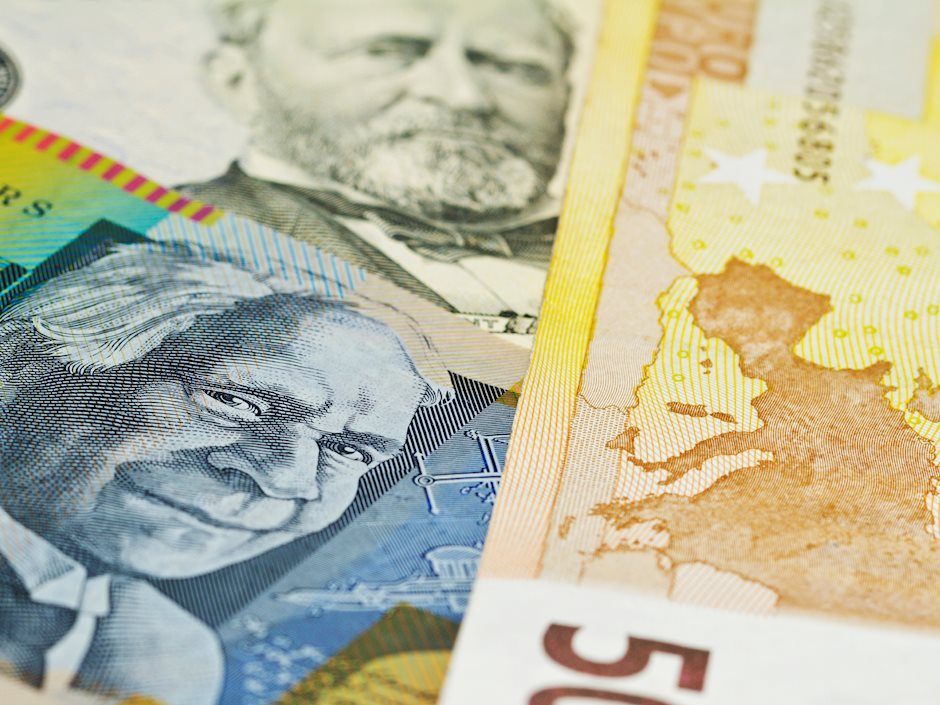EUR/AUD edges higher after well-anticipated ECB rate cut
- EUR/AUD trades moderately higher after the ECB goes ahead with an expected interest-rate cut after its June meeting.
- Relatively robust Australian macroeconomic data continues to cap gains for the pair.
- Further, the RBA governor raises the possibility of raising interest rates if inflation fails to fall sustainably.

EUR/AUD is trading up a tenth of a percent in the 1.6360s on Thursday after the European Central Bank (ECB) announces a highly anticipated interest-rate cut of 0.25% at its June policy meeting. This brings the ECB’s main refinancing operations rate down from 4.50% to 4.25%.
Despite lower interest rates usually proving negative for currencies – because they result in lower foreign capital inflows – the Euro rose after the announcement because it had been so widely telegraphed prior to the event. Additionally, the ECB President Christine Lagarde, gave no hints of further cuts, arguing future policy would be data dependent.
During the press conference after the meeting Lagarde said the decision to cut interest rates had been decided on longer-term forecasts that inflation would fall to the ECB’s target in the fourth quarter of 2025.
In the short-term, inflation would remain elevated, Lagarde said, but “will then decline towards target in the second half of 2025."
The decision comes after a string of lower-than-expected macroeconomic releases for the euro area. On Wednesday, Eurozone factory-gate prices fell by 1.0% in May on a month-over-month basis when analysts had expected a more moderate 0.5% decline. Eurozone Retail Sales in April, meanwhile, declined by a greater-than-expected 0.5% versus estimates of minus 0.3%, and the previous month’s figure was revised down.
Whilst in the US, services sector data surprised to the upside, it was a different story in Europe, where May HCOB Services PMI was revised down to 53.2 from the 53.3 initial estimate. High services inflation has been a key reason why the ECB held back from cutting interest rates earlier.
Australian data overall strong, RBA not for cutting
In Australia recent data has been overall strong. Lending data on Thursday showed New Housing Loans rising by 4.8% month-over-month in April when economists had only expected 1.5% rise. The Trade Balance, meanwhile, showed a surplus of 6.548 billion (AUD) in May, beating forecasts of 5.5 billion, and even though Q1 GDP growth undershot estimates of 0.2% MoM and 1.2% YoY, it did so only by one basis point – some economists such as those at Westpac had expected growth to be flat or even negative. The miss, therefore, was not seen as especially negative.
This has overall supported the Australian Dollar (negative for EUR/AUD) as it continues to reinforce the Reserve Bank of Australia’s (RBA) wait-and-see policy stance.
Of all the G10 central banks the RBA is expected to be the last to cut interest rates, thus providing a supportive backdrop for AUD. Recently the RBA Governor Michelle Bullock even stated that the RBA would not hesitate to raise interest rates if inflation did not look like it was falling back down to the RBA’s 1%-3% target in a sustainable manner. The Minutes from the May policy meeting also revealed the RBA governing council openly discussing the possibility of rate hikes in a scenario where inflation remained high.
Author

Joaquin Monfort
FXStreet
Joaquin Monfort is a financial writer and analyst with over 10 years experience writing about financial markets and alt data. He holds a degree in Anthropology from London University and a Diploma in Technical analysis.

















